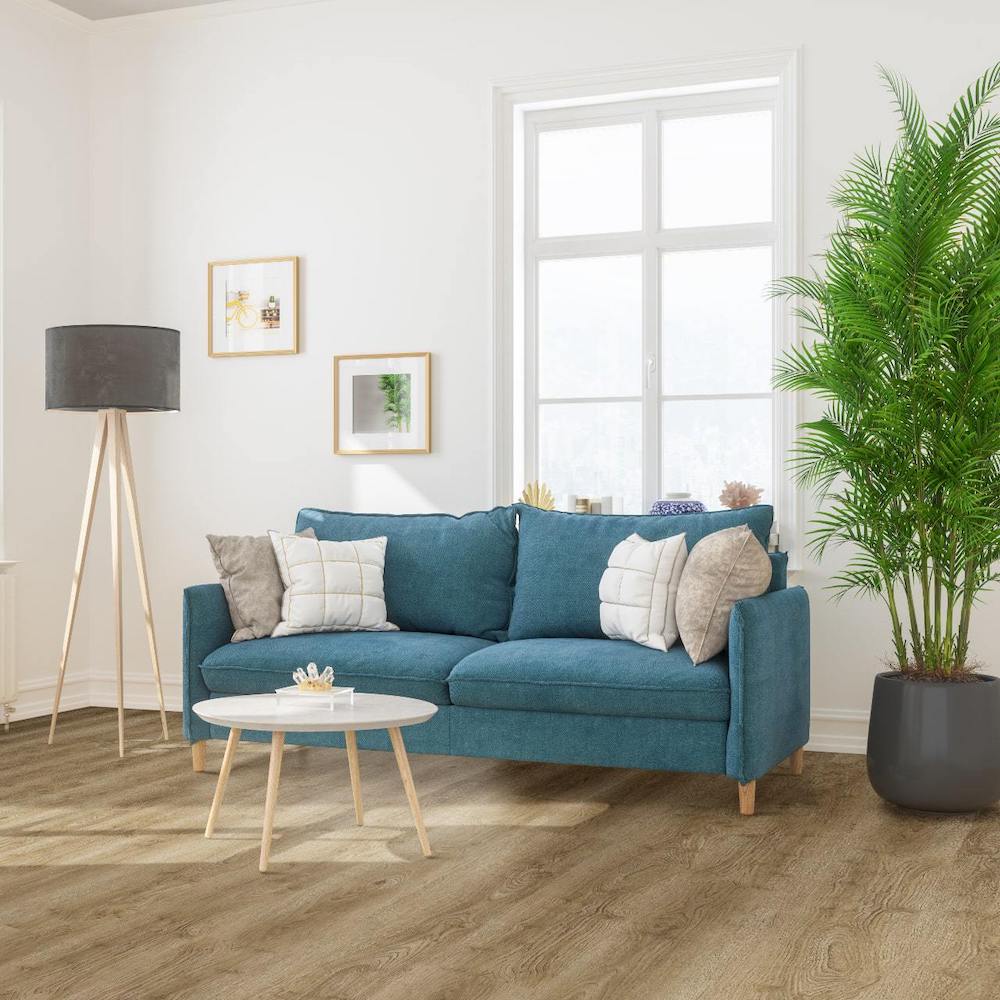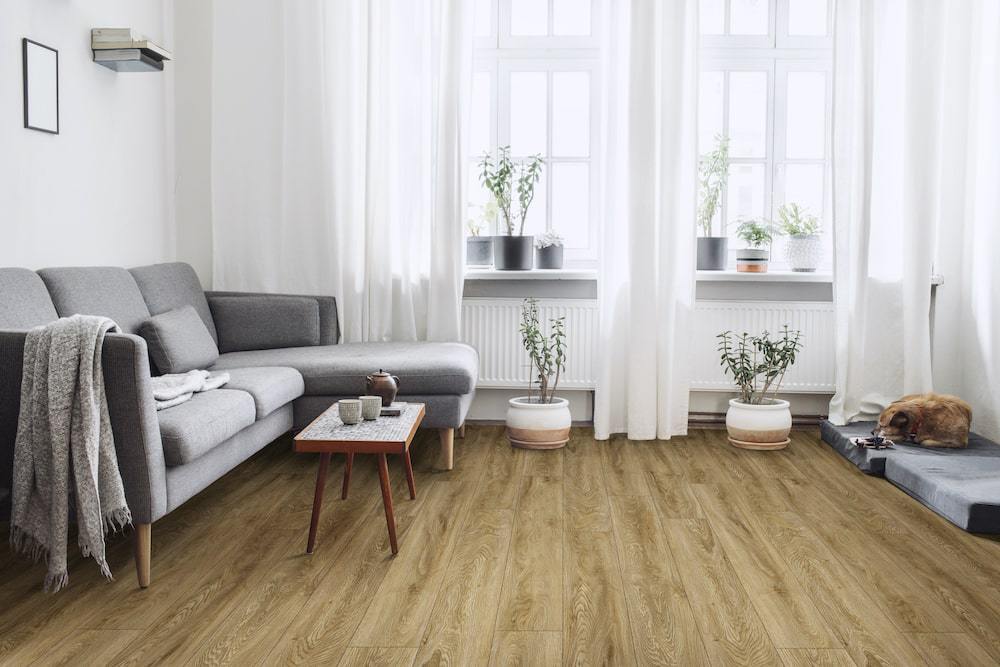What Is The Difference Between 2Mm And 4Mm Vinyl Flooring?
February 21, 2020 Wondering what the big deal is between 2 mm and 4 mm vinyl flooring? How much of a difference does the obvious 2 mm adjustment really make? Well, you might be surprised! Choosing the right thickness for your luxury vinyl is a key factor for a few fundamental reasons, such as subfloor, foot traffic, and glue-down versus click-lock installation methods. Plus, thickness and wearlayer also tend to go hand-in-hand, and this layer measurement can affect how long your vinyl lasts. Use this guide to learn more about the features and figure out which luxury vinyl flooring option is right for your next project.
Wondering what the big deal is between 2 mm and 4 mm vinyl flooring? How much of a difference does the obvious 2 mm adjustment really make? Well, you might be surprised! Choosing the right thickness for your luxury vinyl is a key factor for a few fundamental reasons, such as subfloor, foot traffic, and glue-down versus click-lock installation methods. Plus, thickness and wearlayer also tend to go hand-in-hand, and this layer measurement can affect how long your vinyl lasts. Use this guide to learn more about the features and figure out which luxury vinyl flooring option is right for your next project.
Vinyl Thickness vs. Wearlayer
To identify the difference between vinyl thickness and wearlayer, which are two separate measurements, you need to understand the several layers that make up vinyl flooring. A urethane coating on top provides sheen and protects the wearlayer, which is a clear PVC (vinyl) layer that gives planks their texture and varies in thickness. It also protects the print film layer, the paper design that features the color and pattern of the LVP or LVT flooring look. The vinyl core is mixed with plasticizers or fiberglass to give it strength. The final layer may be an attached cork or foam backing depending on the product.
 Ashton Bergen Hills Luxury Vinyl Planks
Ashton Bergen Hills Luxury Vinyl Planks
The thickness, measured in millimeters, refers to the actual vinyl core. Luxury vinyl planks range in thickness from 2 mm to 4 mm to 8 mm and above for higher quality products. Thinner versus thicker products require certain subfloors and will also be installed differently and discussed in more detail below. However, knowing the thickness of your vinyl planks is extremely important, especially if you’ll be trying to match it to existing floors in other rooms. This is something that should be measured before purchasing in order to avoid unevenness.
The wearlayer, measured in mil, refers to the second clear vinyl layer. It ranges in thickness from 8 mil to 12 mil, suitable for residential needs, and 20 mil to 40 mil, suitable for commercial needs. The thicker the wearlayer, the more protection your print layer has against scratches, scuffs, and dents. For reference, a 20 mil wearlayer is equivalent to .5 mm, and a 40 mil wearlayer is approximately 1 mm thick. This thickness measurement should be greatly weighed when determining traffic and usage for your project.
2 mm Vinyl Flooring
Luxury vinyl tile or planks with a 2 mm thickness are exclusively glue-down floors since they are too thin to have a click-lock system. However, they are more affordable than thicker vinyl flooring options. Because they are glued down directly to the subfloor, the vinyl flooring installation doesn’t need an underlayment but will require additional supplies like glue and a trowel. While it can be done as a DIY project, having an experienced professional complete the job is best because additional prep work is involved to start on a smooth, level surface. The floor also cannot be walked on right after it’s installed. An important question to ask before purchasing a 2 mm vinyl floor is the foot traffic, as it may not stand up to the demands of heavy use.
4 mm Vinyl Flooring
The majority of 4 mm vinyl flooring features a click-lock system that locks the planks in place and provides an easier vinyl flooring installation. Because of this, thicker vinyl will come at a costlier price than thinner vinyl. These floating floors can be placed over most existing floors or subfloors, too, since they’re not glued directly onto the surface. While no glue, staples, or nails are necessary, you’ll need a vapor barrier underlayment to provide moisture protection between vinyl and a concrete subfloor. The 4 mm and up vinyl floors will be able to handle heavier foot traffic, so it’s perfect for busy families and preferred for commercial installations.
Cleaning Vinyl Flooring
A main luxury vinyl flooring benefit is that it is known to be a low-maintenance flooring option, and fortunately, both 2 mm and 4 mm products utilize the same cleaning tactics. Regular vacuuming or sweeping help rid dirt. If you choose to vacuum your flooring, then make sure to forgo the beater bar, as this can be rough on your LVT or LVP. Better yet, ditch manual vacuuming for a Roomba, which will be gentler on your vinyl flooring and less work for you, especially if you schedule it to work while you’re out of the house. For a more thorough clean, mop the floors using a safe floor cleaner or stripper, but make sure that it doesn’t contain any detergents or abrasive cleaners that can leave a dull film, high-alkaline solutions that can loosen any adhesive, or solvent-based polishes that can cause damage. For new floors, wait to mop at least 48 hours after installation so that any moisture won’t affect the adhesive.
Warranty Differences
Any offered warranties should always be read carefully and considered before making a purchase. Many products come with different warranties for residential and commercial applications. Some higher quality or thicker products for home use may have a lifetime limited residential warranty, while other thinner vinyl may only include a limited 8-year warranty or something similar to that timeframe. With regards to commercial installs, they range quite a bit since the floors will see a lot more intense foot traffic. Offered warranties could range from 6-year light commercial use to 20-year light commercial use, or they might have a 10-year or 15-year commercial warranty for products that can handle heavier foot traffic.
 Ashton Colston Park Luxury Vinyl Planks
Ashton Colston Park Luxury Vinyl Planks
How Thickness Matters
Today’s vinyl flooring comes in a wide range of stunning colors, realistic patterns, and various thicknesses, so it’s important to factor in its durability and installation method in addition to its good looks. Selecting 2 mm or 4 mm vinyl depends on your individual needs, such as subfloor type and amount of foot traffic, not choosing one that’s better than the other. Now that you know some of the main differences, ask yourself a few questions to help determine which thickness is best suited for your project.
If you're interested in using MSI luxury vinyl planks for your next flooring project, contact us today via our online chat or find an MSI-authorized dealer near you and visit an MSI showroom to see samples in person.
More About Luxury Vinyl Flooring
Can I Use Luxury Vinyl Planks On Top Of Radiant Heating
Luxury Vinyl Flooring Trends: Layouts and Patterns
 Charcoal Oak Vinyl Planks
Charcoal Oak Vinyl Planks